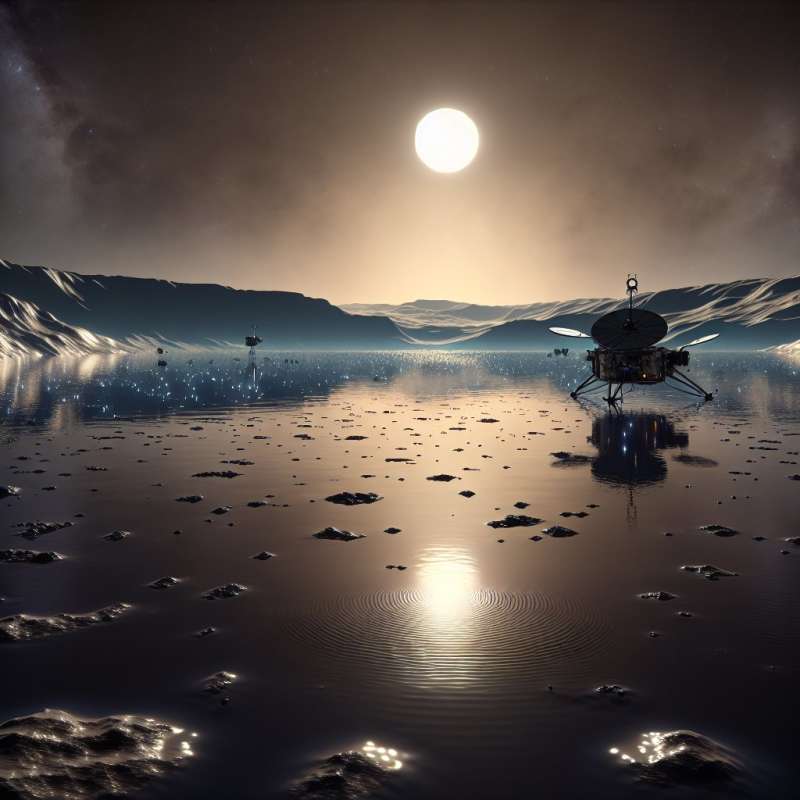
Titan's Mysterious Presence
Saturn's moon Titan intrigues scientists with its thick atmosphere and stable liquids on the surface, resembling early Earth, but much colder.
Hydrocarbons Galore
Unlike Earth's oil, Titan's 'oil' isn't biological but made from hydrocarbon rain, stemming from methane and ethane in the atmosphere.
Extraterrestrial Methane Cycle
Titan experiences a methane cycle akin to Earth's water cycle, with clouds, rain, and possibly methane or ethane lakes and seas.
Cassini's Revelations
NASA's Cassini spacecraft discovered vast lakes and seas of liquid methane and ethane, the largest being Kraken Mare.
Formation of Hydrocarbon Lakes
Titan's lakes formed from erosion and dissolution of the icy surface by liquid hydrocarbons, a process similar to karst formation on Earth.
Atmospheric Chemistry
Solar radiation breaks down methane, creating complex organic molecules, which may settle and contribute to the 'oil' deposits on Titan.
Astrobiological Potential
The complex organic chemistry on Titan offers a unique environment for studying prebiotic chemistry and the potential for life's building blocks.Titan's Sand Dunes
Titan has sand dunes made of frozen hydrocarbons, stretching for hundreds of kilometers, resembling Earth's deserts.
What makes Titan's atmosphere intriguing?
Presence of breathable oxygen
Stable liquids resembling early Earth
High temperatures like Venus
Company